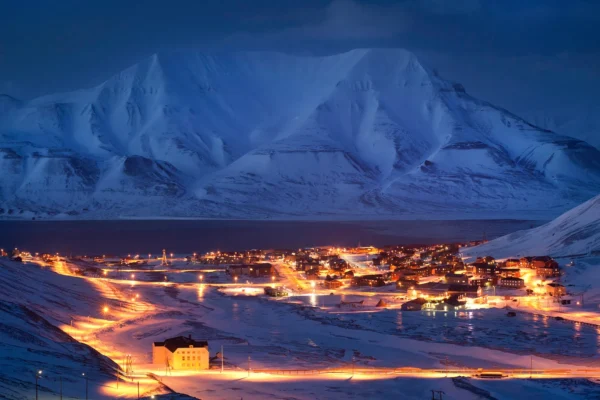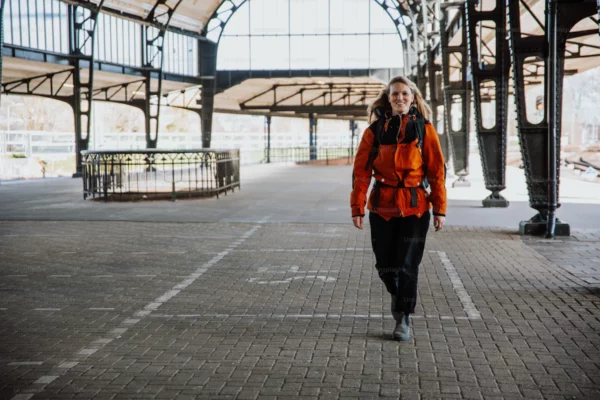
5 Gorgeous Islands For an Unforgettable Sailing Holiday in Croatia

More people are discovering Croatia’s spectacular beauty. Croatia has an extensive coastline to explore with over 1,200 (yes, that’s right 1,200!) islands dotted on the Eastern edge of the Mediterranean in the Adriatic Sea. Croatia is now the leading yacht charter holiday destination in the Med and once you have been sailing there you will understand why. However, despite its continually growing popularity it doesn’t feel crowded or jaded with too many tourists.
Sailing is one of the best ways to explore the coastline with its natural beauty and quiet serene calm. More than 80% of Croatia’s islands are uninhabited. All are surrounded by pristine azure blue waters for swimming and diving into. Some of the islands are tiny, barely more than rock and sparse vegetation but others have historic villages to explore and enjoy.

The typical Mediterranean climate gives dry warm summers and pleasant winters. Croatia has one of the sunniest coastlines in Europe with June temperatures averaging around 25°C. Gentle summer breezes mean it’s easy to explore bay after bay, island after island. There are plenty of contrasts to ensure everyone has something to enjoy whether you seek quiet natural hideaways or fun village nightlife. There is something for everyone.

High season is considered in July and August but even then there are plenty of places to explore that are not crowded. You can still be in European infrastructure without pressing elbow to elbow to enjoy the sights. On the other hand you can also seek out sophisticated bars and clubs for might partying in a sophisticated atmosphere in places like Hvar, Split, or Dubrovnik. Marina’s are less crowded in May or October with the still pleasant temperatures for sunseekers.
Spring, from mid March onwards brings warm dry weather which is perfect to get active with sailing, cycling, hiking and in the south the waters may be warm enough to go swimming and diving.
Autumn can be especially beautiful for nature’s display of colours from the extensive woodlands on some islands. National parks around the River Krka and Plitvice Lakes look stuning at this time of the year.
There are many options for sailing around the islands of Croatia depending on your own skill level as a sailor. If you are not so sure you want to navigate yourself consider opting for flotilla holidays and relax to your heart’s content. The prevailing wind is north-west with an average wind speed of 7/8 knots. Winds can increase towards the afternoon up to 10-20 knots so real sailors can get a kick out of sailing at speed.
Planning for a sailing holiday is simple as your transport and accommodation is with you where ever you go. Keep everything environmentally friendly by travelling light and using reusable travel gear wherever possible.
Korčula Island

Korčula is one of the most populous islands in the Adriatic but you won’t feel crowded as you explore quiet villages interspersed with vineyards or take a break in one of the pretty fishing villages on the rocky coastline. The dense enchanted forests have been on Korčula for millennia and the Greek actually named it Korkyra Melaina because of the stark dark trees. The woods still exist but it more famous now for the cool crisp wine produced on the island.
Korčula is the name of the main town too and it claims to be the birthplace of Marco Polo, although Venetians strongly disagree. There is a worthwhile gallery dedicated to the intrepid traveler. Take time to explore other medieval structures and the town’s beautiful Gothic Renaissance style cathedral, St Marco which was completed in the 1600s.
Separated from the mainland by a narrow strait, Korcula is the most populated of all the islands in Croatia.
Brač Island

Brač is the largest of the central Dalmatian Islands by area and boasts the highest mountain on any Adriatic island, Vidova Gora. It has a population of about 14,000 and its own airport, Bol. Brač has a rich history and has been inhabited since prehistoric times from the Neolithic age. Although arid, Brac has a rich tradition in olive tree cultivation and the resulting oils are worth sampling. Pine and fig trees also grow over the rolling hills.
The island is has remote coastal spots, with many rocky outcrops which give rise to its main export of the natural white stone prized by architects the world over.
Visit the Dragon’s cave on the southern end to see if there is any smoke and check out the museum in the village of Škrip. Popular activities on Brač include scuba diving, kite surfing, windsurfing, or just chilling out in remote bays for swimming and sunbathing.
Cres Island

Cres is the archetypal Croatian island with its northern hills cloaked by oaky forests, rocky stark cliffs overlooking azure blue waters. The ancient hilltop towns are quaint and charming overlooking pebbled beaches below. Climb central to visit the deep freshwater lake of Vrana, one of the deepest in Eastern Europe.
Cres is known for its nature with a resident colony of griffons that soar on the consistent breezes over the Adriatic Sea in search of their next meal. Other activities around Cres include scuba diving, and hiking.
Dugi Otok Island

Dugi Otok is the largest of the northern Dalmatian islands. It’s long and narrow with 45km length yet only between 1-4 kilometres wide. Telascica Bay is considered by many to be one of the most beautiful of Adriatic beaches while Sakuran is another with spectacular stony cliffs sheltering a sandy beach below. There is a national park on the south eastern end which is great for hiking and cycling. Other activities include diving and rock climbing.
Dugi Otok has been inhabited since Paleolithic prehistoric times with many archeological sites around the island, many still holding their unexplored secrets. Hill forts and grave sites give evidence that humans have lived on the island right up to present times. Now there are ten settlements, mostly on the sheltered Eastern side.
Vis Island

With its relative isolation from the mainland Vis has retained a unique charm and still reflects the 1950s style of its heyday. You feel the Europe of mid twentieth century in the buildings and gardens. Vis is another Adriatic beauty with a long tradition of wine making it a mecca for wine connoisseurs. The flinty rocky soils produce distinctive wines. The quaint tone houses with rock walls, olive plantations and tranquil vineyards all go together with the magnificent scenery overlooking remote beaches and pristine aqua coloured waters.
The island was not so affected by when it was part of Tito’s Yugoslavia and you get the feeling things change slowly on Vis. The inhabitants are laid back and welcoming without the hustle and bustle of tourist focused towns. You can take time to explore tunnels and bunkers build in less peaceful times by passing armies. Vis has an interesting mix of history and nature to explore.
There are over 20 dive sites around Vis with plenty of underwater hstory to discover. Wrecks from the Greek and Roman times lay in watery graves alongside those from recent military battles, including submarines and planes.
Keep on Sailing
If sailing and the island life is for you, consider exploring the Cape Verde Islands off the coast of West Africa. They too have crystal clear waters and balmy temperatures all year round to ensure you keep your tan.















































